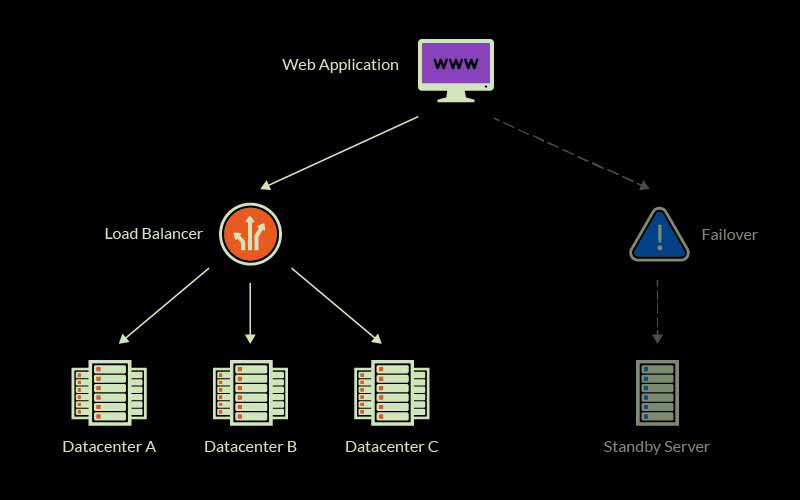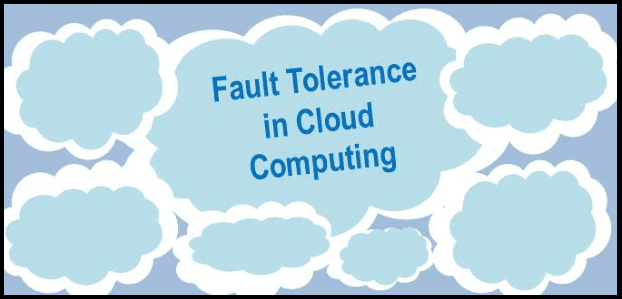Technology in today’s world has reached almost its peak. There are innumerable places in our country that run with the help of high-end technology. There can’t be a possible success without efficient computers and networks. To make the technology more effective and work-efficient, fault tolerance is becoming the talk of the town. Read this article to get a detailed view of fault tolerance in cloud computing.
What is Fault Tolerance?
Fault Tolerance is a term not very familiar to many people. Fault Tolerance refers to the capacity of a system, be it a computer or any network, to operate without any interruptions even if some of its components fail.
In other words, it means that a system will work and bear any faults or malfunctions that are present in any of its components. This allows a network or a computer to function at a comparatively reduced level rather than just shutting down in the event of component failure. Levels :
- Lowest level – enables a computer to give a response to power faults.
- At the intermediate level – the potential to make use of backups
- Enhanced level – it ensures slow work instead of a complete breakdown
- High level – different processors scan errors and correct them simultaneously.
The systems that are fault-tolerant make use of backup systems. They may be:
- Hardware Systems – If a hardware system fails, a similar system takes its place to ensure no breakdown. For Example, it is using an identical server in place of the faulted one.
- Software Systems – A mirrored system ensures the backup of a faulted system. For Example, they have a second database ready in case of failure of the primary one.
- Power Sources – A similar power source can substitute the failed one. For Example, I am using a generator in case of electricity failure.
Also Read:
Fault Tolerance in Cloud Computing
Fault Tolerance in cloud computing is concerned with designing a basic design so that the system continues to work even if there is a fault in any parts. It is important because most businesses and enterprises use technology that is likely to experience faults, and thus, a backup is necessary. Fault Tolerance in Cloud Computing has certain important things associated with it:
Replication – Fault Tolerance is based on this important principle. There has to be a replicate of the primary system so as to ensure timely replacement.
Redundancy – This is also an essential element. A backup system should be there in case of failure of any component.
Techniques
The services provided by a system need to be given equal priority. To design an effective fault tolerance system, all services should receive priority. Also, databases should receive special care for they empower other units. Finally, fault tolerance has to be ensured using a mock test.
Fault Tolerance in Microservices
Microservice Architecture, or to put it simply, microservices, is a technological approach in which one application is composed of many smaller components.
Microservice needs necessarily be fault-tolerant because the smaller parts rely on each other. Due to an increase in microservice interaction, faults also increase. We need to ensure that the failure of one service does not break down the entire network. There are certain design patterns with which we can make our microservice fault-tolerant:
Circuit Breaking Pattern
If your microservice architecture faces a failure, then you need to ensure fault tolerance by opening the circuit. This ensures the working of your system even if one service has faced a setback. Hystrix and Polly can be used to implement this technique.
Retry Design Pattern
According to this pattern, you can simply try a retry to reset a failed connection. In case of a temporary issue, this may help. Moreover, this pattern is believed to work most of the time.
Timeout Design Pattern
While designing your microservices, think about faults and set a timeout for the network. It provides users a plus point of not having to wait for long periods of time.
Fault Tolerance in Distributed Systems
Distributed Systems or Distributed Computing is a system having different components. These are located on diverse machines which coordinate actions to appear as a single system.

Distributed Systems may face partial failure. This means that one of the components may get affected, which may affect the others in a distributed system. A distributed system should be designed so that the failure caused is recovered automatically without actually breaking down the whole system. A fault-tolerant system has 4 primary attributes :
- Availability: It means the probability that the system is ready and available at a given time.
- Reliability: It is a property that enables a system to run without faults for a specific time.
- Safety: This indicates that there will be full safety in case of a temporary failure.
- Maintainability: This means a faulted system has the ability to repair.
Techniques
Some very useful strategies are available to secure fault tolerance in distributed systems.
- Replication Based Technique: It is a popular technique that replicates the data to another system. In this way, the whole system will not stop functioning in case of a failure of one component.
- Process Level Redundancy Technique: This technique is used for faults that stay for a short duration and often don’t spare time to correct them. It allows the Operating System to schedule the hardware processes.
- Fusion Based Technique: This technique stands as an alternative to the replication technique and uses fewer backups.
Fault Tolerance compared to High Availability
Fault Tolerance and High Availability are two different things. When a system minimizes downtime to avoid loss of service, this capacity is called High Availability.
A system needs both high availability and fault tolerance to work effectively. These are equally important in the functioning of a system. However, there are differences that have to be acknowledged.
- Fault Tolerance has no service interruption, where as high availability has minimal of it.
- A Fault-Tolerant system is comparatively expensive as compared to a highly available system.
- Fault Tolerance is concerned with components, whereas High Availability considers the system in particular.
- Fault Tolerance ensures that no data is lost, whereas highly available systems report rare data loss.
Conclusion
Fault Tolerance is essential to ensure the smooth functioning of systems. While its importance can’t be ignored, one has high expenses to pay also. In today’s world of high-end technology, fault tolerance in cloud computing ensures that businesses and big companies work effectively. We have not been able to achieve a perfect fault-tolerant system, but in the near future, this system will be perfected. This would, in turn ensure that the systems (hardware or software) work without any worry about breakdown or failures.
Frequently Asked Questions
1. What are the techniques to achieve fault tolerance?
Ans. There are many fault tolerance techniques available for both the components of a system – hardware as well as software.
Hardware Techniques
- BIST ( Built-In Self Test)
- TMR (Triple Modular Redundancy)
- Circuit Breaker
Software Techniques
- N Version Programming
- Recovery Blocks
- Check to point and Rollback recovery
- Failure Oblivious Computing
- Recovery Shepherding
2. What is Fault Tolerance used for?
Ans. Fault Tolerance is used to allow the smooth functioning of systems even if there is a failure in any one component of the system.
3. How can we achieve Fault Tolerance in Cloud Computing?
Ans. Fault Tolerance in Cloud Computing is achieved by designing a complete overview to continue the computer work even if one or two components fail.
4. What is Scalability?
Ans. Scalability is the capacity of a computer or any of its components to continue work even if the context of work is changed.
5. What is a good example of Fault Tolerance?
Ans. The most common or a very good example of fault tolerance can be that of an aeroplane. If one engine fails to work, the other balance the plane.
